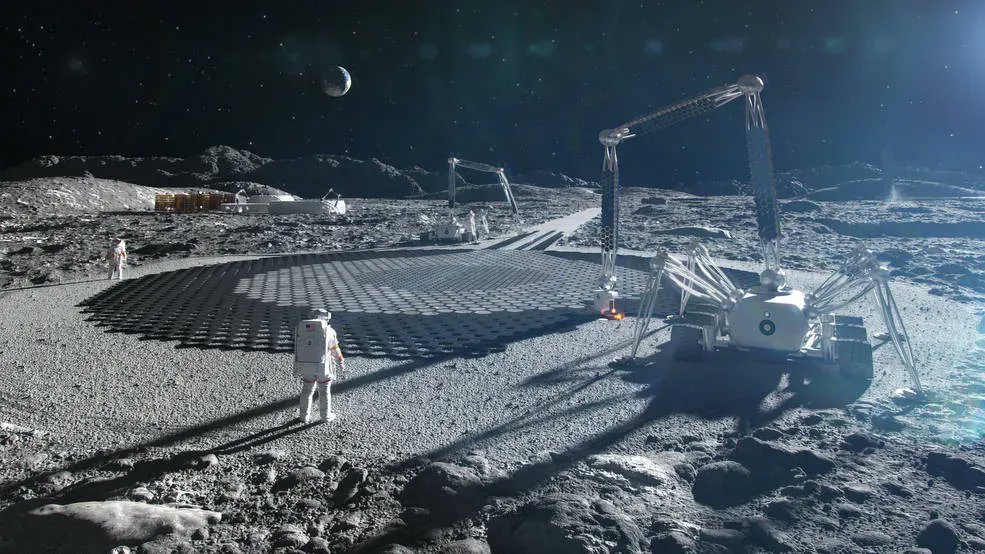NASA has started engaging with commercial partners are some out-there projects. One of the most recent is a six year, $57.2 million deal with ICON, a company based in Austin, Texas that specializes in in-situ resource utilization 3D printing technologies.
With its recent step forward with the Artemis program, NASA hopes to return to the Moon in this decade and stay there. If astronauts do that, they will need infrastructure, including places to land, drive, and live.
One of the best ways to create those places will be by utilizing resources that are already on the Moon, rather than shipping them directly, and expensively, from Earth. And ICON has proven itself to be one of the world’s most capable organizations at doing just that. Their 3D printing infrastructure system, known as Olympus, is useful for more than just making things out of regolith.
Credit – ICON – 3D Tech YouTube Channel
The company also received a joint NASA / US Air Force Small Business Innovation Research Grant (SBIR) that would see them 3D print landing pads out of whatever material is available at a site, including those on Earth. The $57.2 million would come in the form of a Phase III SBIR contract that would run until 2028.
It will build on other successful demonstrations of the Olympus system. Those include printing a habitat that NASA astronauts will use in the Crew Health and Performance Analog (CHAPEA) experiment, sent to commence next year. Also, the ICON team participated in NASA’s 3D printed habitat challenge, completed in 2021, which led to several advanced 3D printing techniques being developed for the burgeoning lunar exploration industry.
NASA’s Moon to Mars Planetary Autonomous Construction Technologies (MMPACT) program will be managing the project with ICON. MMPACT’s express goal is to solve the problem of building landing and takeoff infrastructure on the lunar surface. And it won’t be reliant solely on ICON’s technology, but the company definitely has an advantage.
It’s not solely focused on building things in our space, though. ICON’s technology also has even more potential use cases here on Earth. The company recently 3D printed 100 homes in Georgetown, Texas, and plans to expand their 3D printed constructions to other places in need of affordable housing. NASA’s support is another pillar of that, albeit a potentially massively important one.
ICON’s CEO, Jason Ballard, puts the mission in perspective in a press release from the company: “The final deliverable of this contract will be humanity’s first construction on another world, and that is going to be a pretty special achievement.” He’s right – now his company has around six years to make the achievement a reality.
Learn More:
NASA – NASA, ICON Advance Lunar Construction Technology for Moon Missions
ICON – ICON To Develop Lunar Surface Construction System With $57.2 Million NASA Award
UT – NASA Sends a 3D Printer for Lunar Regolith and More to the ISS
UT – Mars Rocks Have the Right raw Ingredients to 3D Print Everything From Tools to Rocket Parts
Lead Image:
Artist depiction of 3D printing operation working on a landing pad.
Credit – ICON / BIG-Bjarke Ingels Group


Nice! I recognize some of the Mars habitat design competition suggestions in there as well as the 3D printed houses. With global heating already driving population migration, we’ll need those and with space based communications such as Starlink they will synergize with the Moon landing pads (and later habitats).
Project Olympos will, like Sisyphus, have to strive to do over all the time. The landing site users will eventually have to rebuild pads due to meteorite erosion so the use of local resources will have an added benefit.